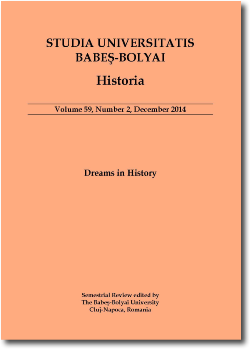THE EVOLUTION OF GENDER RELATIONS IN ROMANIA AFTER THE GREAT WAR
THE EVOLUTION OF GENDER RELATIONS IN ROMANIA AFTER THE GREAT WAR
Author(s): Luminiţa Ignat-ComanSubject(s): History
Published by: Studia Universitatis Babes-Bolyai
Keywords: women; war; gender; Transylvania; Romania; rights.
Summary/Abstract: The Evolution of Gender Relations in Romania after the Great War. The Romanian national state was constituted shortly after the end of the Great War, in December 1918, when provinces that had previously been under foreign rule – Bessarabia, Bukovina and Transylvania – joined the Old Kingdom of Romania. The paper focuses on the changes that occurred in the role of Transylvanian women within the new national state after 1918. I analyse their political grievances and how they acted to obtain rights by starting from the questions: Were women considered second-class citizens? How were they perceived and how did they perceive themselves? My analysis focuses on aspects such as their level of education, given that many of them had only primary school education, their career outside home, most often as domestic servants, their political rights, especially the right to vote given that the 1918 Union Declaration of Alba Iulia proclaimed universal suffrage which was later conspicuously absent from the 1923 Constitution. The article also discusses to what degree we can speak of the existence of women leaders in this period, marriage age, and the changing vision on motherhood previously seen as an obstacle to professional success. A significant part will be devoted to the arguments that women used to obtain the rights they demanded. As for sources, I mainly use newspapers in my analysis, but also legislation and political literature from the period. The article concludes that despite significant steps forward, the striking and persisting differences between women from the rural and urban areas prevented the attainment of West-European emancipation levels. The paper reveals many common features with the newly-formed nation states that took a similar path. Therefore, the paper is a historical and a comparative analysis of feminism as an important factor for gender relation changes after the Great War.
Journal: Studia Universitatis Babes-Bolyai - Historia
- Issue Year: 62/2017
- Issue No: 2
- Page Range: 1-15
- Page Count: 15
- Language: English

